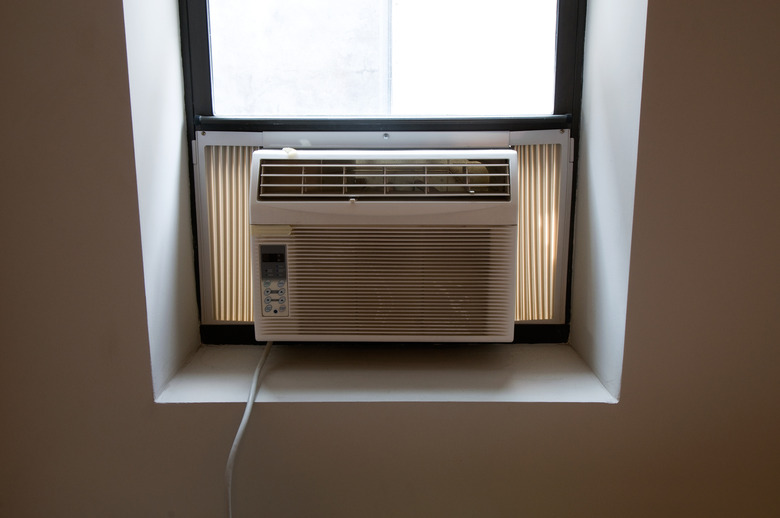The Best Way To Insulate A Window Air Conditioner For Winter
We may receive a commission on purchases made from links.
Window air conditioners are a godsend during the hot summer months for many homes without central air. Once winter rolls around, however, the air conditioner unit must be properly insulated so the cool summer oasis doesn't overstay its welcome. Chances are, your window air conditioner unit is already insulated, but as the winter season starts to close in, updating the insulation will improve the barrier between the frigid outdoors and your home.
Winter Air Conditioner Maintenance
Winter Air Conditioner Maintenance
The best way to protect your room from becoming as frosty as the outdoors is to remove the air conditioner from the window altogether; however, this isn't always possible. Many air conditioner units are bolted in place, making removal a hassle. Or you may just want to avoid liability if something were to go wrong.
To avoid damage to your air conditioner during the winter, you'll need to protect the unit from the elements with an air conditioner cover. Proceed with caution if your unit isn't on the ground floor. In these instances, it can be safer to remove it from the window first. If you must service the unit in place, do so on a sturdy ladder with the help of a spotter at the bottom.
It's also recommended that you clean the air conditioner before turning it off for the winter. Wipe down the air conditioner exterior with a damp rag and mild detergent, removing any leaves or twigs that might have been sucked in. Next, remove the front grille of the air conditioner to gently clean the evaporator coils and the condenser coils located outside the unit. Last, remove the air filter from the unit and rinse it with lukewarm water, and allow all pieces to dry completely before reassembling the air conditioner and placing the cover on the exterior. Once cleaned, you can begin the insulation process.
Check for Leaks
Check for Leaks
The smallest leak can mean the difference between comfortable and arctic when the weather is cold enough; it will also affect efficiency. Especially if the home is already older and drafty, minimizing the controllable leaks in the window will go a long way. Identifying leaks before you begin insulating a window air conditioner can save you some time by isolating and focusing on the problem areas.
To help locate the leaks, light some incense and hold it up along the edges of the air conditioner unit. If you see smoke blowing toward you, the incense is picking up on an air leak. If you don't have any incense on hand, you can use a candle lighter instead. Follow along the edges of the air conditioner unit, keeping an eye on the flame for moments when it blows toward you or flickers.
Common leak locations include the spaces between the glass panes of the upper and lower parts of the window, known as the upper and lower sash. Take note of and mark all identified leak locations.
Insulate the Window Air Conditioner
Insulate the Window Air
Conditioner
Once you've marked all leak points, you can work on insulating your air conditioner unit with a flexible foam insulation material. Ideal for its malleability, flexible foam insulation can fit within various gap sizes and be stacked on top of each other to fit into larger gaps.
Measure the size of the leak with a measuring tape and cut the foam strip to the appropriate size. Then, insert the strip to close the gap. Once the air conditioner is insulated, double-check for any leaks you might have missed or inadvertently caused by adjusting the air conditioner unit.
Now that your air conditioner unit is cleaned, covered and insulated for the winter, you may find that cold air still leaks into the room. To remedy this, you can cover the entire window with a plastic sheet or opt for a fabric indoor cover to help keep the cold air at bay.
